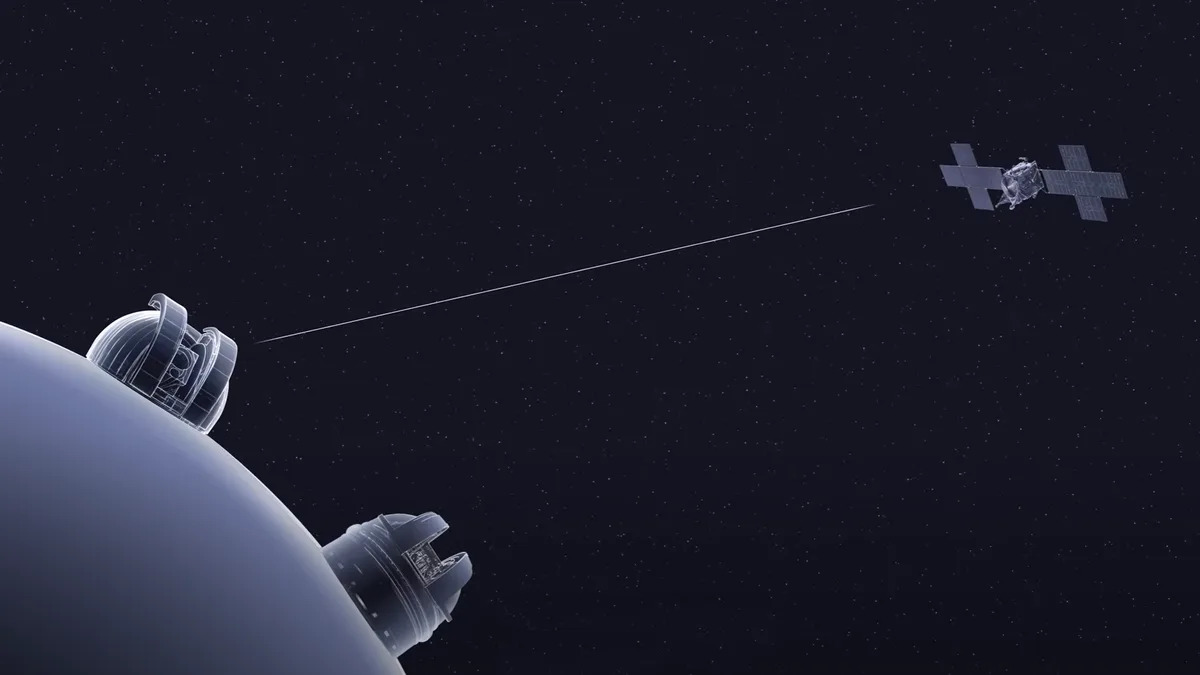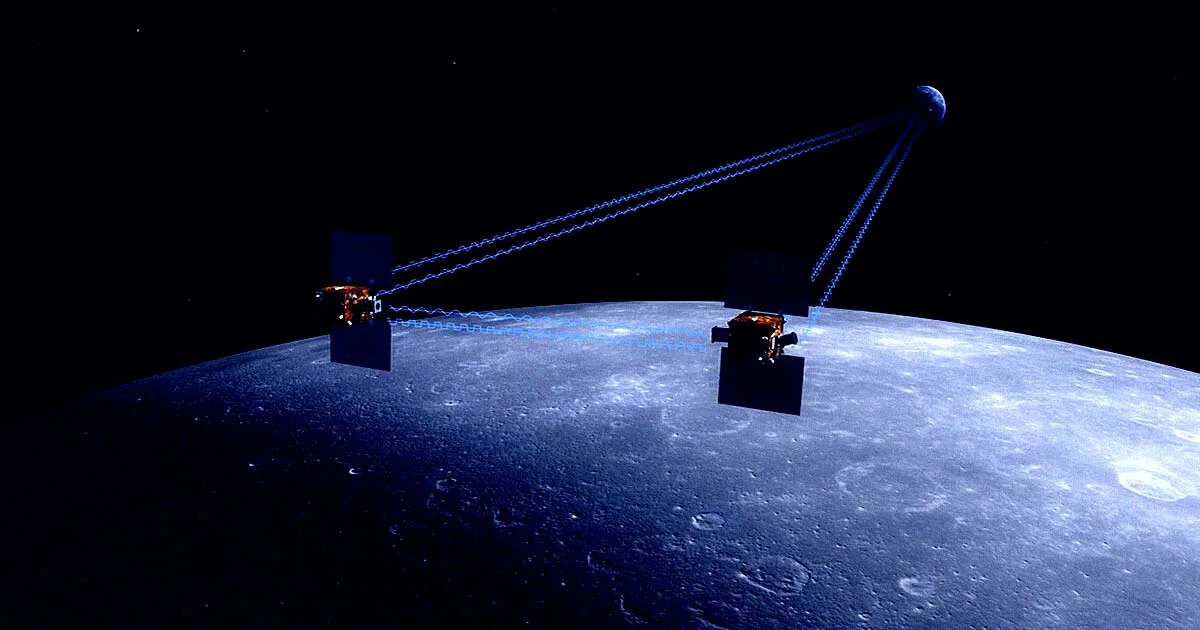Andrew Griffin
Mon 7 October 2024

NASA’s Psyche spacecraft is depicted receiving a laser signal from the Deep Space Optical Communications uplink ground station at JPL’s Table Mountain Facility in this artist’s concept (NASA/JPL-Caltech)
Nasa has successfully sent a laser signal about 290 million miles, smashing previous records and potentially transforming our exploration of the solar system.
The milestone was reached by Nasa’s Deep Space Optical Communications technology demonstration, which is exploring whether it is possible to use lasers to send messages deep into space. Lasers can send data at rates up to 100 times that of the radio frequencies used today, allowing for more complex and high-definition data, but they also require much greater precision to work.
It was sent to the Psyche spacecraft, which launched in October 2023. Its main mission is to study an asteroid with the same name, but it is also carrying the Nasa experiment to test laser communication through space.
The distance – which equates to about 460 million kilometres – is roughly the same as that between the Earth and Mars when they are their most distant.
Nasa hopes that the laser technology can help empower future crewed missions to Mars, among other exploration of our solar system, and so the successful test marks a major breakthrough.
“The milestone is significant. Laser communication requires a very high level of precision, and before we launched with Psyche, we didn’t know how much performance degradation we would see at our farthest distances,” said Meera Srinivasan, the project’s operations lead at NASA’s Jet Propulsion Laboratory, in a statement.
“Now the techniques we use to track and point have been verified, confirming that optical communications can be a robust and transformative way to explore the solar system.”
Nasa administrator Bill Nelson sent his congratulations to the team involved, on Twitter/X. “This extraordinary achievement will transform the way we explore the solar system,” he wrote.
Late last year, Nasa announced that it had successfully completed one such transmission from 10 million miles away. In the time since, it has broken through a whole set of records as Psyche continues to travel further from Earth.
That also included the first ultra high-definition video beamed from space. That happened late last year – when Psyche sent pictures of a cat named Taters.
As the distance from Earth increases, the speed of the connection is reduced. When it was 33 miles away, the spacecraft could receive data at its maximum rate of 267 megabits per second – but when the latest record was broken, in summer, it was hitting maximums of only 8.3 megabits per second.
Maggie Harrison Dupré
Mon 7 October 2024

Moon Goo
Something is moving inside of the Moon. Yes, you read that correctly.
A recent study from scientists at NASA and the University of Arizona found that a layer of low-viscosity goo sits between the Moon's rugged mantle and its metal core. This goo is rising and falling beneath the lunar surface — not unlike, say, ocean tides — which they concluded is likely caused by the gravitational push and pull of the Sun and Earth.
"Just like the Moon raises tides on the Earth, the Earth (and Sun) raise tides on the Moon," reads the study, published last month in the journal AGU Advances. The researchers describe their findings as the "first measurement of the Moon's yearly gravity changes due to tides."
It's a fascinating discovery that works to confirm decades-old theories about the makeup of Earth's only natural satellite — while raising some mysterious new questions, too. After all, how did the magma-like layer get there in the first place? What's its exact composition? And perhaps most crucially, what's keeping it hot enough to stay in its malleable, goo-like form?
Profound Implications
For their study, the scientists analyzed new data from NASA's Gravity Recovery and Interior Laboratory (GRAIL) and Lunar Reconnaissance Orbiter — which were deployed to (respectively) collect gravitational information and conduct more generalized lunar surveillance — to measure monthly and annual tidal movements on the Moon for the first time.
What they found, they argue in the research, could only be consistent with the existence of a deeper, "partial melt" beneath the Moon's rocky mantle, itself comprised of magnesium-iron silicate mineral and pyroxene.
"Only models with a softer layer at the bottom of the mantle match all our measurements," reads the study.
But again, this finding yields an important new question. As the scientists wrote, "such a soft layer, often thought to be partial melt, needs to be maintained." In other words, there's gotta be a reason why this semi-molten layer remains warm and pliable enough to move around.
As you can tell, there are still plenty of known unknowns where lunar inner workings are concerned — but if nothing else, this research has the texture of the kind that opens the door to further revelations in lunar geology. And that's to say nothing of the present: Today, we know just a little bit more about Earth's smaller, cosmic companion than we did before.
Or as the scientists who authored the study wrote: "The existence of this zone has profound implications for the Moon's thermal state and evolution."
More on Moon goo: Scientists Detect Huge Caverns Under Surface of Moon
No comments:
Post a Comment